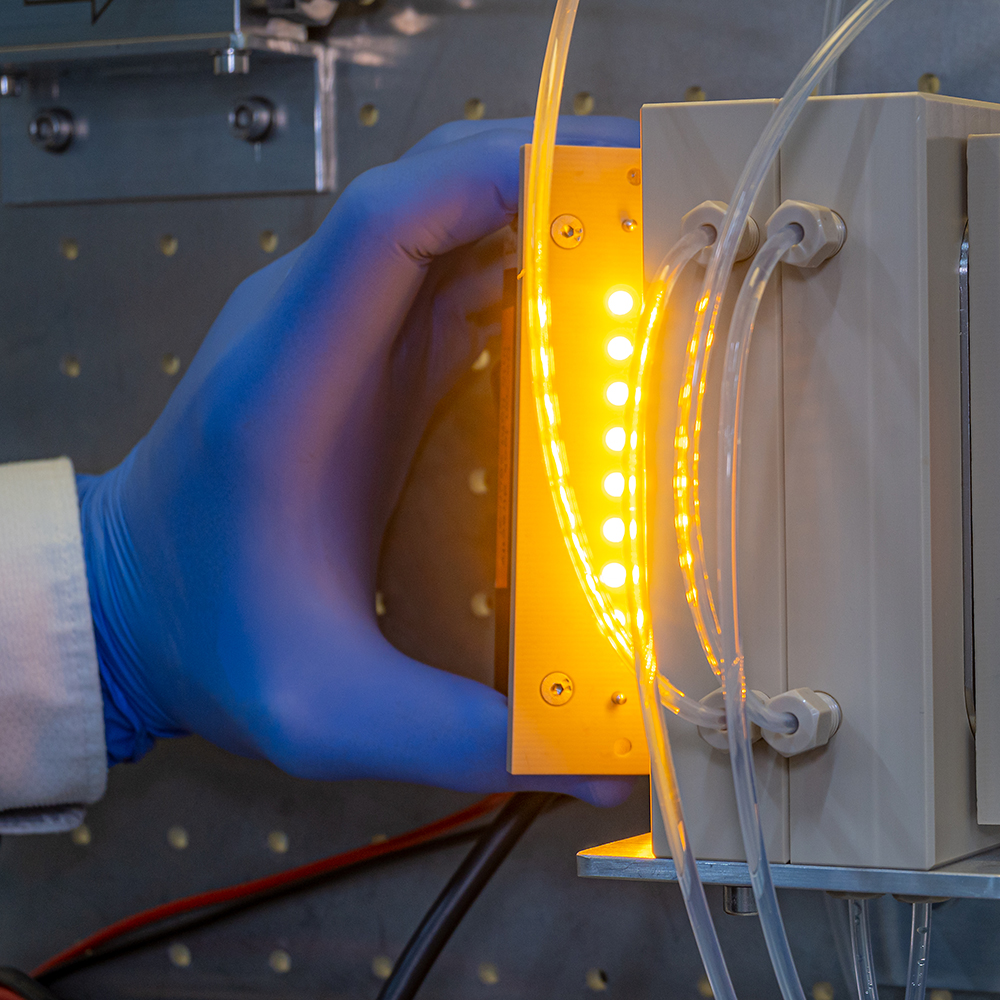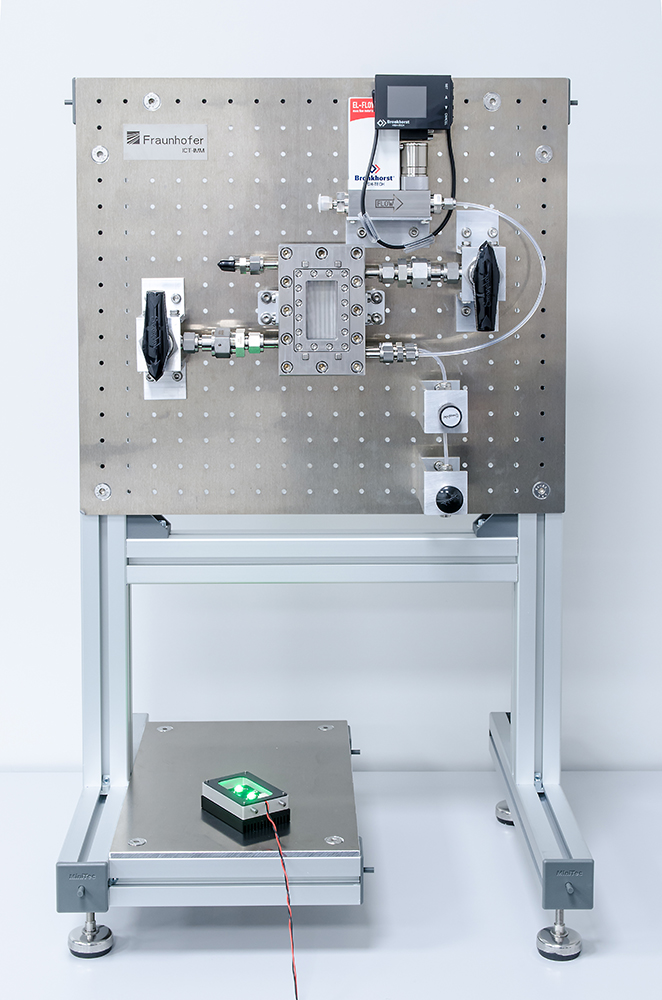Your advantages
- Maximized product quality with visible light for synthetic organic chemistry under mild reaction conditions!
- New synthetic routes and products for your portfolio available by photochemistry!
- High compatibility of synthetic photochemistry allows the targeted integration into your existing processes.
- Minimized investments at an early stage of your idea as we have the lab and the equipment!
- Realistic sustainability with Green Chemistry in flow!

Visible light for continuous flow photochemistry (CarbonCat project)
 Fraunhofer Institute for Microengineering and Microsystems IMM
Fraunhofer Institute for Microengineering and Microsystems IMM
